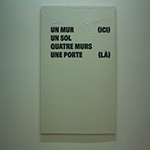Euroacademia Conferences
 Europe Inside-Out: Europe and Europeanness Exposed to Plural Observers (9th Edition) April 24 - 25, 2020
Europe Inside-Out: Europe and Europeanness Exposed to Plural Observers (9th Edition) April 24 - 25, 2020 Identities and Identifications: Politicized Uses of Collective Identities (9th Edition) June 12 - 13, 2020
Identities and Identifications: Politicized Uses of Collective Identities (9th Edition) June 12 - 13, 2020 8th Forum of Critical Studies: Asking Big Questions Again January 24 - 25, 2020
8th Forum of Critical Studies: Asking Big Questions Again January 24 - 25, 2020 Re-Inventing Eastern Europe (7th Edition) December 13 - 14, 2019
Re-Inventing Eastern Europe (7th Edition) December 13 - 14, 2019 The European Union and the Politicization of Europe (8th Edition) October 25 - 26, 2019
The European Union and the Politicization of Europe (8th Edition) October 25 - 26, 2019 Identities and Identifications: Politicized Uses of Collective Identities (8th Edition) June 28 - 29, 2019
Identities and Identifications: Politicized Uses of Collective Identities (8th Edition) June 28 - 29, 2019 The European Union and the Politicization of Europe (7th Edition) January 25 - 26, 2019
The European Union and the Politicization of Europe (7th Edition) January 25 - 26, 2019 7th Forum of Critical Studies: Asking Big Questions Again November 23 - 24, 2018
7th Forum of Critical Studies: Asking Big Questions Again November 23 - 24, 2018 Europe Inside-Out: Europe and Europeanness Exposed to Plural Observers (8th Edition) September 28 - 30, 2018
Europe Inside-Out: Europe and Europeanness Exposed to Plural Observers (8th Edition) September 28 - 30, 2018 Identities and Identifications: Politicized Uses of Collective Identities (7th Edition) June 14 - 15, 2018
Identities and Identifications: Politicized Uses of Collective Identities (7th Edition) June 14 - 15, 2018
Sculptor Ivan Meštrović – Cultural and Political Diplomat of 20th and 21st Century
-
-

-
Presentation speakers
- Barbara Vujanović, Curator – Museums of Ivan Meštrović, Meštrović Atelier, Zagreb
- Download presentation
Abstract:
Beginning of the 20th century in Eastern and Central Europe was a turbulent period of the disintegration of the old states (Austro-Hungarian Empire) and the formation of the new ones (Kingdom of Yugoslavia). The repercussions of those events spread till the end of the century. Croatian sculptor Ivan Meštrović (1883 – 1962) played a decisive role as the creator of the south Slavic political ideas. He used the platform of exhibitions abroad to announce and expand the identity of the newly formed nation and to establish its position as cultural and political factor. During his Parisian period (1908 – 1909) he conceived the Vidovdan temple, the mythological paradigm of the liberation of Slavic peoples, and their transnational identity, which he introduced on the XXXV. Secession exhibition (Vienna, 1910). The following year while participating in the International Exhibition (Rome), he decided to exhibit in the Serbian pavilion, not in the Austro-Hungarian, making a strong political statement. In the years to come, his engagement intensified– he was the founding member of the Yugoslav Committee (1914 – 1918), a group of South Slavs from Austria-Hungary seeking to join the existing south Slavic nations in an independent state. Meštrović used the platform of one man exhibitions (Victoria & Albert Museum, London, 1915) and joint projects (Exhibition of Yugoslav Artists, Petit Palais, Paris, 1919) as the tool of the dissemination of cultural and political diplomacy. In the period of the breakup of the second Yugoslavia, in the nineties, his role had been reassessed, providing the path to revision of his political and artistic persona. After the two decade hiatus, during which he was absent from big exhibitions, the entrance of Croatia in the EU was marked with his exhibitions (Paris, Stockholm). The paper will give historical review and its interpretation in the light of recent events. -
Related Presentations


















